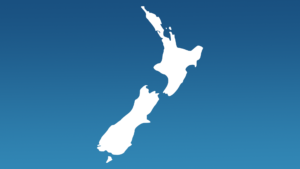For the past five years, New Zealand smokers have been embracing the new generation of less harmful alternatives to conventional cigarettes. The number of adult smokers vaping in New Zealand is growing along with new devices, flavours and nicotine levels that suit the very individual habits of smokers.
These dramatic shifts in smoker behaviour, and the maturing of the vape category itself, occurred at a time of great uncertainty. No one knew the legal status of these products.
Regarding the potential risks of vaping, the New Zealand government now accepts the scientific consensus that vaping is significantly less harmful than smoking, so getting more smokers to transition to vaping is a desirable public health goal. This mature policy objective has been praised by public health experts here and overseas.

That should not be surprising, as public health experts across the world have accepted the “harm reduction” approach to diseases and addictions for some decades now. The strategy swaps out really bad behaviours for lesser ones. It was initially developed for adults with serious substance abuse problems where abstinence was not practically achievable, reducing morbidity and mortality.
Harm reduction has successfully been extended to reducing teen pregnancies, sexually transmitted diseases, and risky alcohol use. It can be seen in manufacturing too: everything from back seat belts and extending childproof containers from prescription drugs to washing powders and other hazardous chemicals.
Harm reduction is at the heart of the NZ Government’s planned legislation on vaping. The aim is to utilise the appeal and accessibility of vape products to adult smokers who are thinking about their best way of quitting tobacco.
The challenge is that like cleaning products, prescriptions and other ‘R18’ consumables, vaping products need to be sold publicly. That creates a small challenge to prevent vaping being used regularly by youth and those who never have smoked, or are unlikely to smoke.
This is the challenge being wrestled with by the Health Select Committee looking at the Smokefree Environments and Regulated Products (Vaping) Amendment Bill. They are weighing the evidence and personal testimony of hundreds of vapers, retailers, manufacturers and public health experts. Associate health minister Jenny Salesa has been quoted calling the bill “the most significant change to New Zealand’s smokefree laws since they were introduced 30 years ago”.

Grant O’Connell has overseen numerous studies on vaping, safety and toxicology at Imperial.
Trading places
These are the same challenges we faced when we launched our global vaping brand myblu in New Zealand.
Without legislation and regulations to guide us, we had to consider advantages to public health, practicalities of availability and restrictions on sale, and consumer safety parameters. We carefully deliberated what the product should look like, where it should be available, and how it should be advertised or promoted in store. And importantly, who it shouldn’t be available to.
Underpinning all of these discussions and the decisions we made was our resolve to apply our global best practice in lieu of any regulatory framework.
Our vaping products are as available for smokers to purchase as our combustible ones, including our network of dairies and convenience stores throughout New Zealand. We do this because familiarity and convenience for access are necessary for adult smokers to switch.
Store managers are equipped with information so they can talk to smokers, to help them understand the reduced risks associated with vaping and how to begin their transition. We offer a small but varied range of flavours and strengths and our products are clearly labelled in English and Maori, with warning messages describing the addictiveness of nicotine.
Like many in the industry, we are self-imposing an R18 age restriction on all our vape sales. Marketing and advertising do not target youth or seek to glamorise vaping. Every message communicated describes the relative health, price and physical appearance advantages of vaping compared with smoking.
Our team of over 300 scientists, engineers and innovators work to ensure our vaping products are made to the highest safety and quality standards and are supported by the best-in-class science: see the Research section of our new science website for many examples.
myblu is a closed pod, ‘tamper proof’ system. We purposely chose a closed pod system to restrict opportunities for people to misuse or mix illicit ingredients into the liquids. We use pharmaceutical grade nicotine, propylene glycol and glycerol and high-quality flavour ingredients in our e-liquids. All of our vaping products, their ingredients and the vapour produced undergo thorough scientific assessment prior to manufacture and sale.
We have learnt much in the past 10 months in New Zealand. We know that convenient access, reliable information and confidence in the quality and satisfaction of vape products are the critical success factors for smokers to quit smoking.
We think the approach we’ve taken achieves the regulatory balance the Select Committee is looking for.
Our approach to selling and marketing vapes is based on the principles of having restrictions in proportion to the risk posed by the product, especially relative to cigarettes. It is our hope that this experience, and indeed that of many vape manufacturers and retailers, guides the Committee’s thinking for a harm reduction framework in regulation that maximises the public health benefits of vaping products for New Zealand’s adult smokers.
This article is edited from an Op-Ed in Scoop.